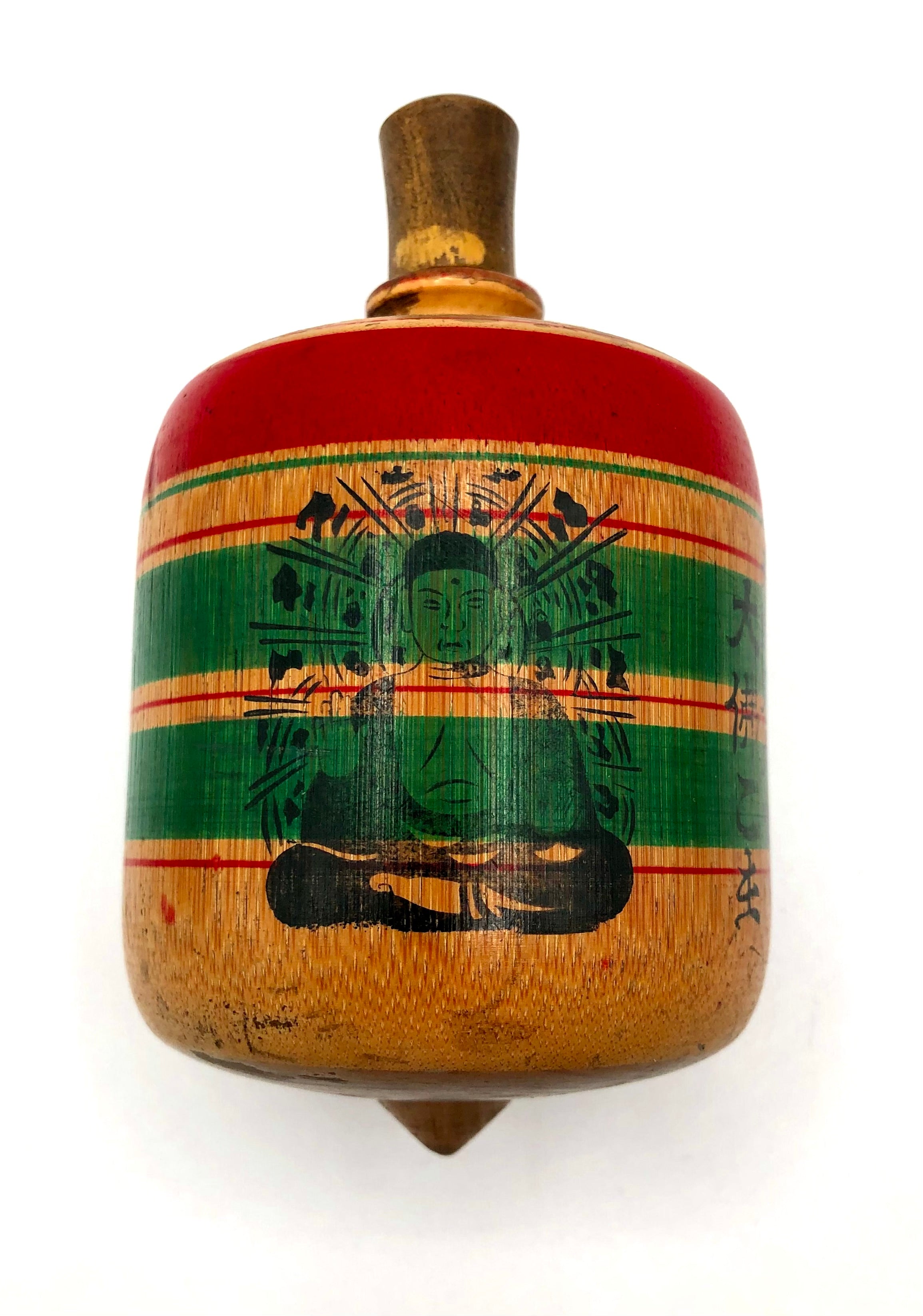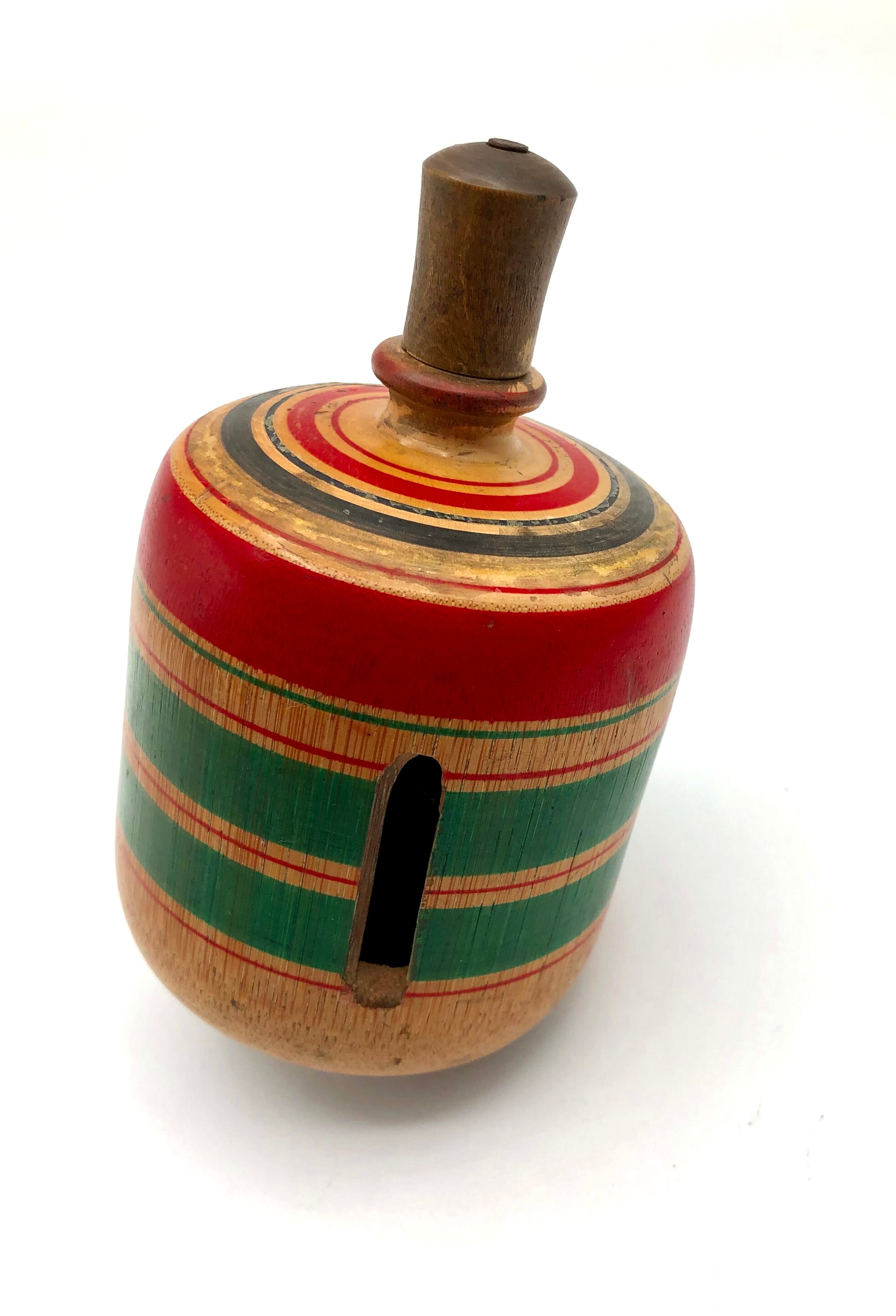

Vintage Japanese “Narigoma” Humming Koma | Crying Top - Todaiji Temple, Nara
Dimensions: 5-0”h x 3-1/4”dia.
Samurai warriors had special arrows with a bulb attached to the tip so that, when shot, they would make an unworldly sound to scare their enemies. Street performers in the big samurai cities like Edo (present-day Tokyo), Osaka, and Kyoto had special spinning tops with similar shapes that, when spun, would make an eerie sound to excite their audiences. It is been made by traditional craftspeople using the techniques which has been passed down by predecessors beginning two hundred years ago. There are new interpretations of this top but with no character and history of use as the piece being offered.
Research tells us that the word “Koma” was first referred to in a Chinese literary work called “Wamyosho“, but the Japanese equivalent was koma tsukuri which translates as "that which had a hole in it" and clearly this refers to a hole that is a carved out of bamboo and occasionally gourd that allows the tops to "hum”, and still exists today as the bamboo narigoma known as the togoma. Other names for tops in other regions prior to the Meiji and Taisho periods were zuguri, suguri, and zunguri.
This spinning top is made from hollow bamboo and large enough to have the mass necessary to produce the spectral sound that delighted the people of Edo. I have the original handle device to facilitate spinning on the top, with a perfectly proportion point on the bottom to aid in producing a fast spin. It has an elongated cutout “Whizzing Window” on the body is called "Unari mado” which facilitates the sound when you spin the top. It is ringed with circles of red and green horizontal stripes and a wonderful painted image of a sitting Buddha on the front. He is seated on an open lotus flower and also holds one in his hand - the lotus is the symbol of purity. Garnishes surrounding the Buddha—like flora, fauna, and a halo, and highly figurative in renditions of Buddhism. The piece is signed by the maker but being old script it is difficult to interpret although our research shows that it was made by craftsmen and sold at the Todaiji Temple, Nara Japan.
Condition: Excellent with some indication of wear but remains an impressive, and beautiful spinning top. No chips, cracks, breaks, missing pieces, or restoration, and retains its original details and finish. The piece meets all the standards of the collectible Koma and Toys, and this top being a piece of Edo (1600-1868) culture is a veritable collector's item!
